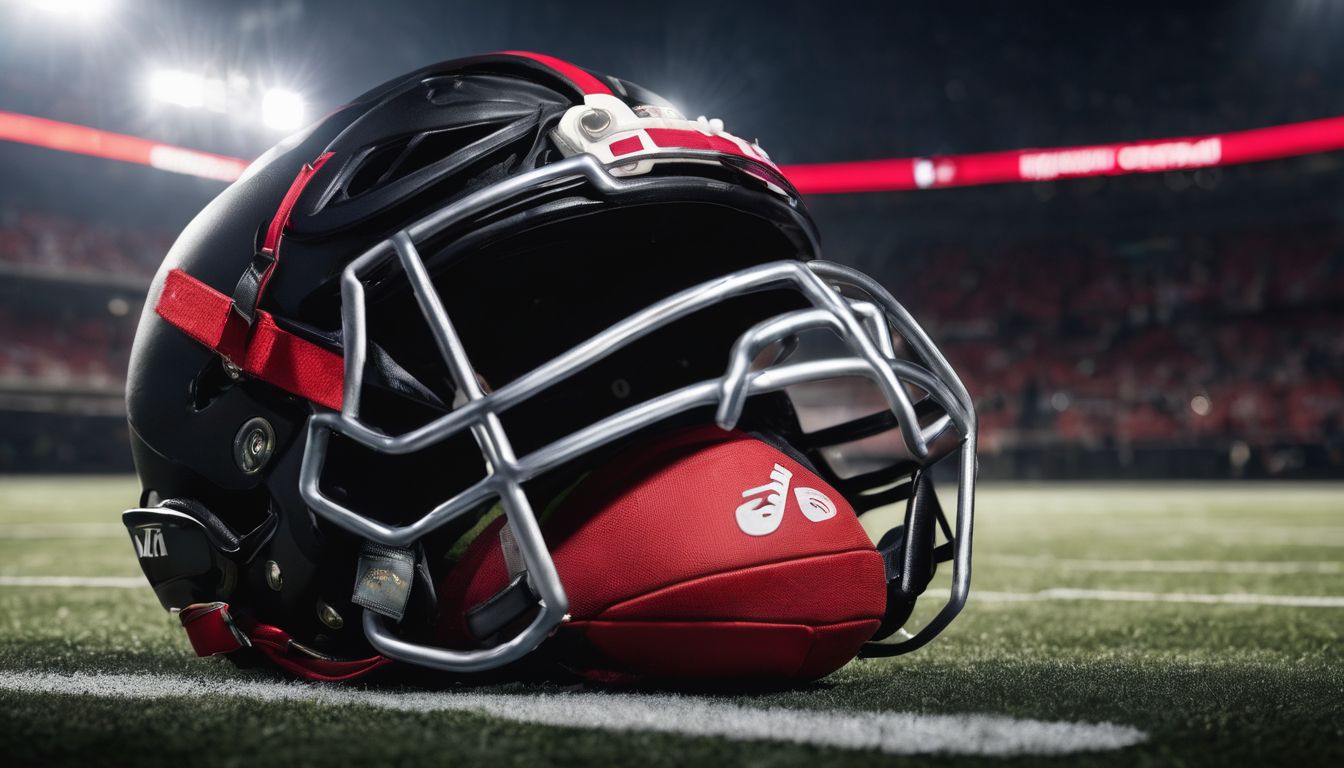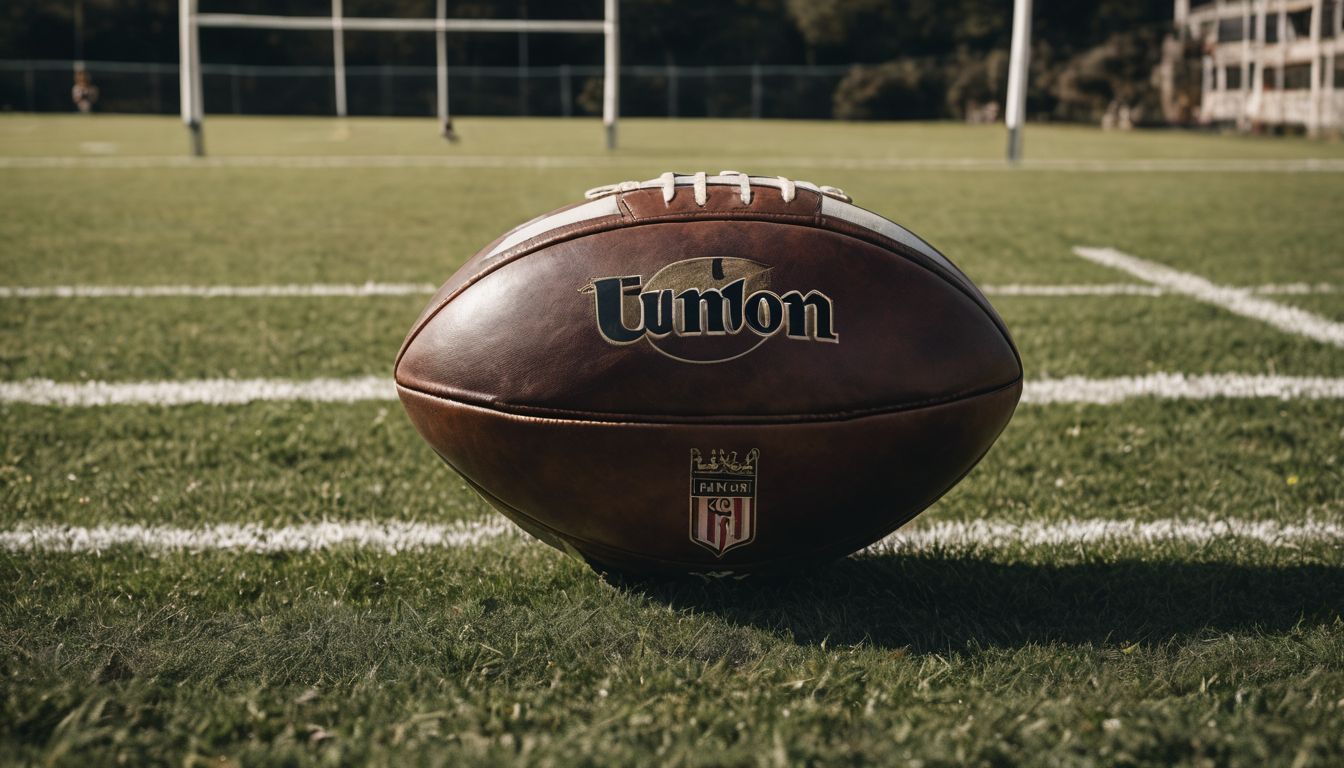Understanding the roles in rugby can be like piecing together a complex puzzle. Amongst all positions, the Number 8 stands out as a linchpin, responsible for balance and dynamism within the team.
This article reveals how this crucial player impacts every game, from crunching tackles to strategic ball carries. Dive into the world of rugby’s unsung hero—the Number 8.
Key Takeaways
- Number 8 players in rugby are central to the team’s success, acting as a link between forwards and backs with their unique blend of physical presence and agility.
- They carry out various responsibilities on the field, including ball carrying through defensive lines, making strategic tackles, providing support at rucks and mauls, securing possession at lineouts, and directing action within scrums.
- A Number 8 must possess key traits such as strength for power plays, speed to break through defenses or chase down opponents, leadership qualities to guide the team during play phases, and decision-making ability for tactical plays under pressure.
- Their performance directly influences the game by creating space for teammates to advance offensively or by defending against opposition attacks using anticipation and positioning skills.
- The evolution of this position reflects broader changes in rugby strategy and training methods aimed at developing well-rounded athletes who can contribute dynamically across all aspects of gameplay.
The History and Evolution of Number 8 Position in Rugby
Diving into the storied past of rugby, the Number 8 position has undergone significant changes to become what it is today. Originally, this role didn’t stand out as distinctly as other positions on the field.
Early rugby saw all forwards acting quite similarly during play, with less specialisation than modern times. As the sport evolved and rules became more structured, specific responsibilities emerged for each player.
The Number 8 began to develop a unique identity in the team, straddling a pivotal point between forward brute force and backline agility.
This position’s transformation can be traced through shifts in strategy and physical demands of the game. Unlike their early counterparts who primarily focused on scrums and raw power, today’s Number 8 players boast an impressive all-round skill set—including ball handling finesse required for launching attacks and resilient defence tactics from first phase plays.
They became instrumental in connecting the forwards with backs due to their diverse responsibilities; perfecting techniques like securing control over loose balls behind scrums or providing quick support during lineouts solidified their central role within a squad’s structure.
The evolution highlights not just tactical advancements but also changes in training methods geared towards creating well-rounded athletes capable of excelling across various aspects of gameplay—showcasing just how much both individual roles and rugby itself have adapted over time.
The Responsibilities of a Number 8 Player
Supporting teammates, tackling opponents, and carrying the ball are just a few of the crucial responsibilities that a number 8 player must handle on the rugby field. Their role is integral to the team’s overall success.
Supporting teammates
The Number 8 in rugby provides crucial support to their teammates, bridging the gap between the forwards and backs. They must work closely with their fellow players, offering assistance in both attack and defense.
The role requires the Number 8 to be agile and responsive, ensuring they are always available to receive a pass or provide an option for a teammate under pressure. Additionally, they need to communicate effectively with other players on the field, coordinating movements and strategies to support their team’s overall performance.
Furthermore, the Number 8 acts as a link between different phases of play, contributing significantly when it comes to supporting teammates in various aspects of the game. Whether it’s creating space for their backline or providing options for forward runners during attacking plays, supporting teammates is at the core of what makes a successful Number 8 player.
Tackling
A number 8 in rugby must demonstrate strong tackling skills, effectively stopping opposition players in their tracks and regaining possession of the ball for their team. This involves using physical strength, speed, and technique to execute powerful and effective tackles on opposing players.
As a key defensive player, the number 8 is crucial in disrupting the momentum of the opposition’s attack and setting the tone for the defensive line.
Executing formidable tackles is an essential part of a number 8’s role in rugby, as it not only helps to prevent the opposition from advancing but also provides an opportunity to regain possession and launch counter-attacks.
Ball carrying
Moving from tackling to ball carrying, the number 8 in rugby plays a pivotal role in breaking through the opposition’s defensive line with powerful runs. Carrying the ball in hand, they strategically maneuver through defenders, creating opportunities for their team to advance towards the try line.
Using their physical strength and agility, they aim to make substantial gains and set up attacking plays for their teammates.
The number 8’s ability to navigate through tight spaces and fend off defenders is essential for gaining ground on the field. Their skillful ball-carrying techniques not only help in advancing the team’s position but also disrupt the opposing defense, making them a key player during offensive plays.
Scrums
The number 8 holds a pivotal position in the scrum, standing at the back and anchoring the forward pack. They play an essential role in maintaining stability and control during the scrum, ensuring that their team secures possession of the ball.
With their hands on the ball, they have the responsibility to feed it into the scrum or extract it smoothly when necessary – a crucial task that demands strength and precision.
In addition to their responsibilities within the scrum, number 8 players are also tasked with leading and directing their fellow forwards from behind. Their ability to communicate effectively and make quick decisions is vital for steering the scrummaging efforts of their team.
Rucks and mauls
In rucks and mauls, the Number 8 is crucial in providing support to teammates by securing possession of the ball. With their physical strength and stamina, they play a vital role in ensuring that their team retains possession during these phases of play.
The Number 8 also contributes to creating a stable platform for the team to launch attacking plays from rucks and mauls, utilising their decision-making ability to determine when to pick up the ball or distribute it to other players.
During rucks and mauls, the Number 8’s ball-carrying skills come into play as they aim to gain ground while evading opposition defenders. Their ability to withstand pressure, maintain a strong body position, and provide quick passes are essential in keeping the momentum going for their team.
Lineouts
When transitioning from rucks and mauls to lineouts, it’s important to understand the role of a Number 8 in these set-piece plays. In lineouts, the Number 8 stands at the back of the line and lifts players to catch or disrupt the opposition’s throw.
They use their strength and agility to provide crucial support for their teammates jumping in the air, ensuring that possession is secured or disrupted effectively.
The Number 8’s physical strength is essential in executing successful lineouts, as they play a pivotal role in both attacking and defensive strategies during this set piece. Their ability to lift teammates while maintaining balance and stability is vital for securing possession or disrupting the opposition’s throws, showcasing their all-round contribution on the rugby field.
Traits and Skills Required for Number 8 Position
Number 8 players need physical strength, speed, leadership and decision-making abilities to excel on the rugby field. Find out more about the essential traits and skills required for this vital position.
Physical strength and power
Physical strength and power are essential for a Number 8 player in rugby. The position demands robust physicality to dominate in the scrums, carry the ball effectively, and make crucial tackles.
A mix of raw power and explosive strength enables the Number 8 to burst through defensive lines and create momentum for their team, making them a force to be reckoned with on the field.
The physical attributes required by a Number 8 extend beyond just brute force; they also need endurance to maintain their performance throughout the game. As such, conditioning plays a pivotal role in developing the necessary strength and power while ensuring that stamina levels remain high.
Speed and agility
Speed and agility are crucial attributes for a Number 8 in rugby. The player must possess rapid acceleration to exploit gaps in the defense or chase down opponents, as well as quick lateral movement to evade defenders and transition between offense and defense effectively.
A nimble and agile Number 8 can swiftly react to changing game situations, making them a valuable asset in both attacking plays and defensive efforts on the field.
To excel in this position, a Number 8 needs to combine their physical strength with swift bursts of speed, allowing them to break through the opposition’s defensive line or cover ground rapidly when defending against counter-attacks.
Leadership and communication
Effective leadership and clear communication are essential traits for a Number 8 player in rugby. A strong leader on the field, the Number 8 must inspire and motivate their teammates, setting an example with their work rate and commitment.
They communicate instructions to coordinate the forward pack during scrums, lineouts, rucks, mauls, and defensive phases. Clear communication is crucial for executing set plays effectively and ensuring that everyone is working together towards a common goal.
Moreover, as a key decision-maker on the field, the Number 8 needs to make quick judgments about when to pick up from the base of the scrum or engage in support play. By providing clear directions and making decisive decisions under pressure, the Number 8 contributes significantly to the team’s overall performance.
These qualities make them central figures in uniting both forwards and backs seamlessly on the pitch.
Decision-making ability
The number 8 in rugby needs to make quick and effective decisions on the field. They must assess the situation during scrums, rucks, and mauls, deciding when to pick up the ball or pass it off to a teammate.
Moreover, they need to choose whether to follow pre-planned strategies or react spontaneously based on how the game unfolds. The decision-making ability of a number 8 is crucial for maintaining momentum and outmaneuvering opponents.
In addition, the number 8 has to read the opposition’s defensive patterns and decide on their ball-carrying route accordingly. This involves assessing gaps in the defense and exploiting any weaknesses with swift decision-making skills.
Tactics and Strategies for Number 8 Players
Number 8 players need to excel in ball carrying techniques, create space for their teammates on the field, and defend against opposition attacks with strategic positioning. These tactics and strategies are essential for effective play in this key position.
Ball carrying techniques
To excel in the role of a Number 8, mastering ball carrying techniques is essential. The player must aim to gain maximum ground while maintaining possession and evading opposition tackles.
Using strength and agility, the Number 8 aims to power through defensive lines, keeping the ball secure while driving forward. As an integral part of attacking strategies, the player seeks gaps or weak spots in the opposition’s defense to exploit and press through with determined force.
Aside from pure strength, quick decision-making skills come into play as well when deciding on whether to take contact or look for supporting players. A successful ball carry not only gains territory but also draws defenders towards them, creating opportunities for teammates to exploit gaps in the opposition’s defensive line.
Creating space for teammates
The Number 8 in rugby creates space for teammates by drawing in opponents and breaking through defensive lines, giving their team more room to attack. They use their strength and ball-handling skills to make powerful runs that put pressure on the opposition, allowing other players to exploit gaps and advance the play.
By using decisive footwork and positioning themselves strategically, they force defenders to commit to tackling them, which opens up opportunities for others.
In addition, they can draw attention away from key playmakers by providing a strong attacking presence, forcing opponents to focus on defending against their direct threat. This allows the team’s creative forces more freedom in finding gaps or creating overlaps as they benefit from reduced defensive pressure in certain areas of the field.
The ability of a Number 8 player to create space not only enhances their individual impact but also greatly benefits the effectiveness of the entire team’s offensive strategies.
Defending against opposition attacks
Defending against opposition attacks is a crucial aspect of the Number 8’s role in rugby. They must use their physical strength and tackling ability to stop the opposing team from making ground with the ball.
The player should also demonstrate strategic awareness by anticipating the movements of the opposition players and positioning themselves effectively to make key tackles and disrupt attacking plays, ensuring they bridge gaps between forwards and backs while providing defensive cover.
In addition, when defending against opposition attacks, a Number 8 uses their speed and agility to quickly react to changes in play, allowing them to support teammates by closing down space or covering for other players when necessary.
Conclusion: The Vital Role of Number 8 on the Rugby Field
The number 8 position in rugby demands a versatile skill set. This player must excel at ball carrying, tackling, and providing support to the team. Their role bridges the gap between forwards and backs, making them vital to the team’s success.
Number 8 players are crucial for maintaining stability in scrums and contributing to various phases of the game. Overall, their physical strength, technical skills, and strategic awareness define their pivotal role on the rugby field.
FAQs
1. What does a Number 8 do in rugby?
In rugby, the Number 8 is a key player in the back row of a scrum, responsible for controlling the ball and supporting forward positions with powerful running and ball-carrying techniques.
2. What are some tactics used by a Number 8 during games?
A number 8 uses tactics like securing possession at scrums, providing momentum through strong carries, and initiating attacks as part of their responsibilities on the field.
3. Are there physical attributes important for playing as a Number 8?
Yes! A rugby player positioned at Number 8 should have strength to hold ground in scrums and speed for carrying the ball effectively during gameplay.
4. How is the role of a Number 8 different from other forward positions?
The Rugby numberposition differs from other forwards since they often link with both forwards and backs during plays, making them versatile players within rugby union matches.
5. Can anyone be a good Number 8 or are specific skills required?
To excel as a Number Eight in South Africa or anywhere else where Rugby is played demands dedication – understanding strategy behind every move, practicing ball control under pressure, plus having an athleticism to contribute significantly across various play areas.
















